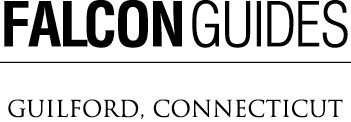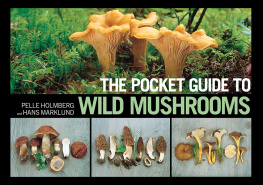The Complete Guide to
Edible Wild Plants, Mushrooms, Fruits, and Nuts
The Complete Guide to
Edible Wild Plants, Mushrooms, Fruits, and Nuts
Finding, Identifying, and Cooking
Third Edition
Katie Letcher Lyle


An imprint of Rowman & Littlefield.
Falcon and FalconGuides are registered trademarks and Make Adventure Your Story is a trademark of Rowman & Littlefield.
Distributed by NATIONAL BOOK NETWORK
Copyright 2004, 2010, 2017 by Katie Letcher Lyle
Photos by Katie Letcher Lyle unless otherwise noted.
All rights reserved . No part of this book may be reproduced in any form or by any electronic or mechanical means, including information storage and retrieval systems, without written permission from the publisher, except by a reviewer who may quote passages in a review.
The following poems have been reprinted by permission: Morels, by William Jay Smith, reprinted by permission of the Johns Hopkins University Press, 1998 by William Jay Smith, The World Below the Window: Poems 19371997 ; The Hermit Picks Berries, by Maxine Kumin from Selected Poems 19601990 , published by W. Norton Co., Inc., 1972 by Maxine Kumin.
British Library Cataloguing-in-Publication Information available
The Library of Congress has catalogued a previous edition as follows:
Names: Lyle, Katie Latcher Lyle,1938- author.
Title: Complete guide to edible wild plants, mushrooms, fruits, and nuts : how to find, identify, and cook them / Katie Letcher Lyle.
Description: Guilford : FalconGuides, 2010. | Includes bibliographical references and index. | Distributed by NATIONAL BOOK NETWORKT.p. verso.
Identifiers: LCCN 2010011383| ISBN 9781599218878 (paperback : alk. paper).
Subjects: LCSH: Cooking (Wild foods). | Wild plants, EdibleNorth America.
Classification: LCC HDTX823 | DDC 641.6dc22 LC record available at https://lccn.loc.gov/2010011383
ISBN 978-1-4930-1864-2 (paperback)
ISBN 978-1-4930-1865-9 (e-book)
 The paper used in this publication meets the minimum requirements of American National Standard for Information SciencesPermanence of Paper for Printed Library Materials, ANSI/NISO Z39.48-1992.
The paper used in this publication meets the minimum requirements of American National Standard for Information SciencesPermanence of Paper for Printed Library Materials, ANSI/NISO Z39.48-1992.
This book is a work of reference. Readers should always consult an expert before using any foraged item. The author, editors, and publisher of this work have checked with sources believed to be reliable in their efforts to confirm the accuracy and completeness of the information presented herein and that the information is in accordance with the standard practices accepted at the time of publication. However, neither the author, editors, and publisher, nor any other party involved in the creation and publication of this work warrant that the information is in every respect accurate and complete, and they are not responsible for errors or omissions or for any consequences from the application of the information in this book. In light of ongoing research and changes in clinical experience and in governmental regulations, readers are encouraged to confirm the information contained herein with additional sources. This book does not purport to be a complete presentation of all plants, and the genera, species, and cultivars discussed or pictured herein are but a small fraction of the plants found in the wild, in an urban or suburban landscape, or in a home. Given the global movement of plants, we would expect continual introduction of species having toxic properties to the regions discussed in this book. We have made every attempt to be botanically accurate, but regional variations in plant names, growing conditions, and availability may affect the accuracy of the information provided. A positive identification of an individual plant is most likely when a freshly collected part of the plant containing leaves and flowers or fruits is presented to a knowledgeable botanist or horticulturist. Poison Control Centers generally have relationships with the botanical community should the need for plant identification arise. We have attempted to provide accurate descriptions of plants, but there is no substitute for direct interaction with a trained botanist or horticulturist for plant identification. In cases of exposure or ingestion, contact a Poison Control Center (800-222-1222), a medical toxicologist, another appropriate healthcare provider, or an appropriate reference resource.
For my longtime morelling companion
Burwell Wingfield, and in memory of Janet Lembke,
whose wild crabmeat and wild essays nourish my body
and spirit, and in memory of my friend Marjorie Bendl, who now forages in greener fields.
Whenever you see a field like this, stop and gather wonderful greens of the mustard family year-round.
Acknowledgments
My warmest thanks and love to all the friends who made this project such fun: the librarians and friends I asked questions of, those who tried out the recipes, intrepid foragers who went with me, tolerant cronies who put up with my obsessions and cheered me on. They are: Karen Bailey, LuAnn Balfry, Georgianna Brush, Carolyn Cox, Andy Johnson, Wendy Knick, Cynthia LaRue, John Letcher, Peter Letcher, Lisa McCown and C. Vaughan Stanley of the Washington and Lee University Rare Books Collection, Grace McCrowell of the Rockbridge Regional Library, my dear agent Sally Hill McMillan, Hope Mihalap, General Jimmy Morgan, Mario Pellicciaro, Sarah Rorrer, Edgar Shew, Tommy Spencer, Suzie Thompson, Frances Tolley, Martha Boyden Williams, Chris Wise, Maureen Worth, Rebecca Worth, and, as always, my fan club, to whom Im most gratefulmy wonderful children, Cochran and Jennie, and my deceased husband, Royster. I also want to thank my wonderful partner, George Roland (Nick) Charles, for his support of my work these last twelve years.

The author gathers watercress.
Introduction
Ive been a forager all my life. My earliest foraging memory comes from San Diego, when I was only three, in 1941. We had been to the beach, my father and I, and were homeward bound in late afternoon when we crossed Mission Bay at low tide and Daddy spotted lobsters, trapped when the tide went out. All we had to collect them in was my potty, so we waded in and scooped lobsters out of the sandy pools. Three of them, and the pot was bulging. Back at the car, we found it wouldnt start, so we walked to the nearest streetcar line to wait for the next trolley (still in our bathing suits) with the potty containing the indignant lobsters. We rode the crowded trolley home, juggling the potty to keep the frantic denizens corralled, to the delight of the other commuters. At home, Mama was horrified that we had made such a scene, had been practically nude in public!
But Daddy winked at me. His face was shining with pleasure, and I savored the delight of being regarded as a maverick. I loved the attention we had attracted; it was most certainly preferable to Mama standing fully dressed, hands on hips, frowning disapprovingly at her two happy, bad kids. To my mother, one of the worst sins was to make a spectacle of yourself.
Next page









 The paper used in this publication meets the minimum requirements of American National Standard for Information SciencesPermanence of Paper for Printed Library Materials, ANSI/NISO Z39.48-1992.
The paper used in this publication meets the minimum requirements of American National Standard for Information SciencesPermanence of Paper for Printed Library Materials, ANSI/NISO Z39.48-1992.
